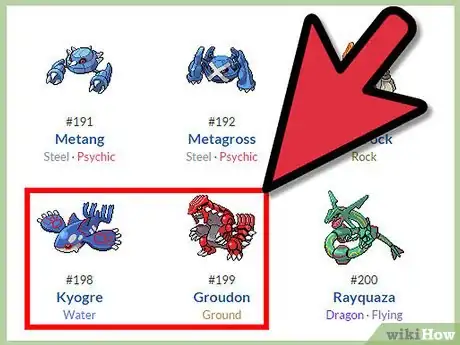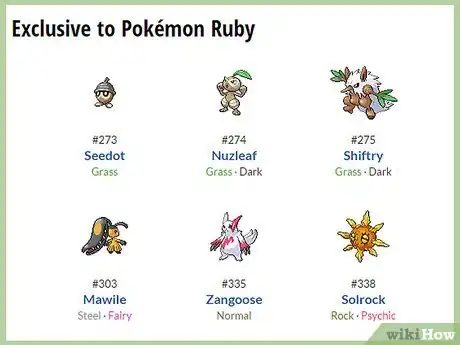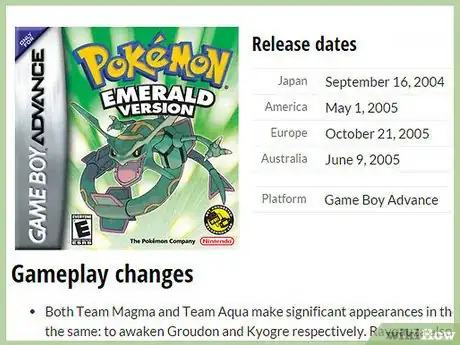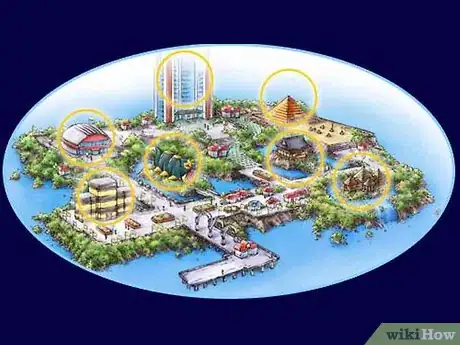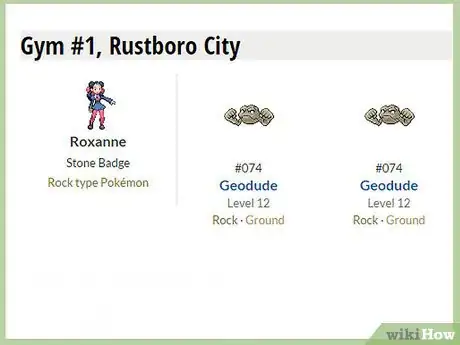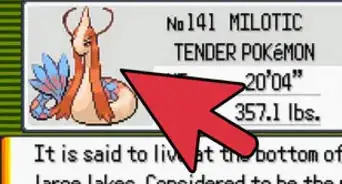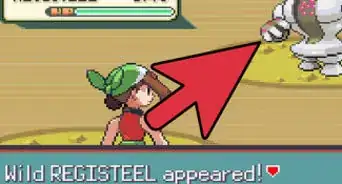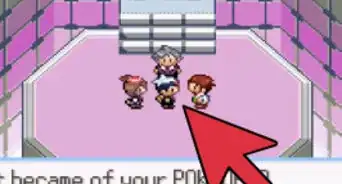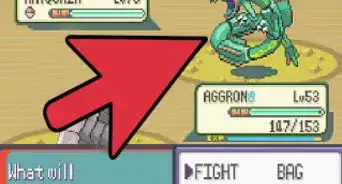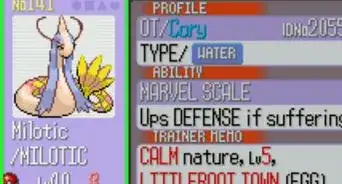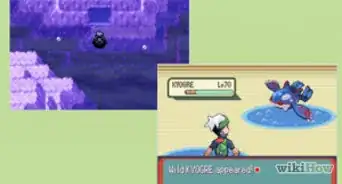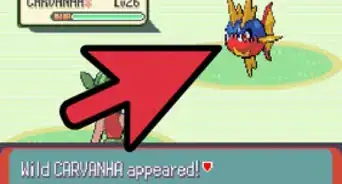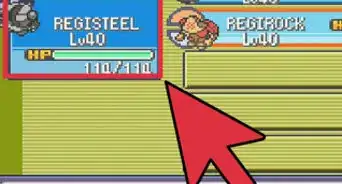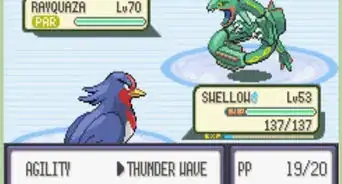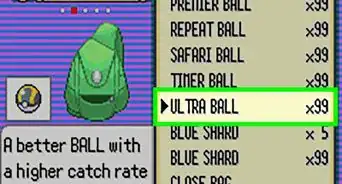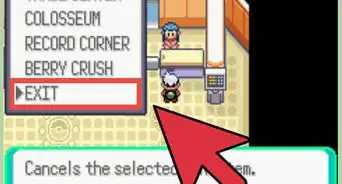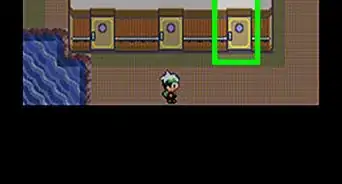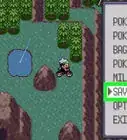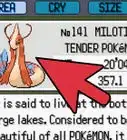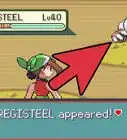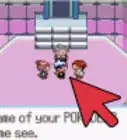This article was co-authored by Madeleine Flamiano. Madeleine Flamiano is a Role-playing Game Enthusiast based in Berkeley, California. She has over 20 years of gaming experience and is an avid gamer in all parts of her life—she's especially fond of tabletop board games and the world of Pokémon. Pokémon Crystal Version is her favorite game in the franchise. Some of her greatest feats were evolving Eevee to a Level 99 Umbreon and collecting every legendary bird Pokémon. Her professional path started at NaNoWriMo, where she scripted a summer-long world-building series and hosted its Virtual Write-Ins. She has written seven books for DDCO Publishing, which specializes in LitRPG and is operated by New York Times Bestseller JA Cipriano. She has ranked in the Top 100 list for Dark Fantasy, Sword & Sorcery, and Fantasy Romance. She was voted by her peers as "The Perfectionist" on Roleplay Adventures, a SERP for forum roleplaying. Madeleine graduated from Mills College with a B.A. in English with a concentration in Literature and a Minor in Philosophy.
There are 11 references cited in this article, which can be found at the bottom of the page.
wikiHow marks an article as reader-approved once it receives enough positive feedback. In this case, 88% of readers who voted found the article helpful, earning it our reader-approved status.
This article has been viewed 477,632 times.
In the wonderful world of Pokémon, few games are quite as beloved as Pokémon Ruby, Sapphire, and Emerald—and with their stunning visuals, wide variety of Pokémon to catch, and exciting storylines, it’s easy to see why. But if you’re new to the franchise (or are just looking to replay some of the classics), how are you supposed to settle on just 1 of these iconic games to play? We’ve got covered. Keep scrolling to learn all about the key features Pokémon Ruby, Sapphire, and Emerald have to offer, so you can decide which game sounds most appealing to you.
Things You Should Know
- Choose Pokémon Ruby or Sapphire for a classic adventure centered around the Legendary Pokémon Groudon or Kyogre, respectively.
- Pick Pokémon Emerald for an all-new storyline that features 3 Legendary Pokémon (Rayquaza in addition to Groudon and Kyogre) as well as some extra features.
Steps
Pokémon Ruby and Sapphire Key Features
-
1Different versions of the same storyline
In both Pokémon Ruby and Sapphire, you play as the main character, whose goal is to defeat all 8 Gym Leaders, beat the Elite Four, and triumph over the current Pokémon Champion to become the new Champion. Along the way, you have run-ins with either Team Magma (Ruby) or Team Aqua (Sapphire), villainous organizations that are hoping to wake up a certain Legendary Pokémon (Groudon in Ruby, Kyogre in Sapphire).[1] -
2Different legendary Pokémon availability
In Pokémon Ruby, you can only catch Groudon, a Ground-type Legendary Pokémon that’s awoken by Team Magma. In Pokémon Sapphire, you can only catch Kyogre, a Water-type Legendary Pokémon that’s awoken by Team Aqua. Kyogre cannot be caught in Pokémon Ruby, while Groudon cannot be caught in Pokémon Sapphire.[2]- Besides either Kyogre or Groudon, the Legendary Pokémon Rayquaza, Regirock, Registeel, and Regice are available in both Pokémon Ruby and Sapphire. The Legendary Pokémon Latios is exclusive to Ruby, while Latias is exclusive to Sapphire.
Advertisement -
3National Pokédex access
There’s no way to get the National Pokédex in-game during Pokémon Ruby or Sapphire. If you trade with a Pokémon FireRed or LeafGreen game, however, your Pokédex automatically gets upgraded to National status.[3] -
4Game-exclusive Pokémon
Like most Pokémon game series, both Ruby and Sapphire feature a few game-exclusive Pokémon that aren’t available in the other title. Here’s a quick run-down of what they are:[4]- Ruby-exclusive Pokémon: Seedot (Grass), Nuzleaf (Grass/Dark), Shiftry (Grass/Dark), Mawile (Steel), Zangoose (Normal), and Solrock (Rock/Psychic)
- Sapphire-exclusive Pokémon: Lotad (Water/Grass), Lombre (Water/Grass), Ludicolo (Water/Grass), Sableye (Dark/Ghost), Seviper (Poison), and Lunatone (Rock/Psychic)
-
5Battle Tower access
Both Pokémon Ruby and Sapphire feature the Battle Tower, a special building below Route 130 that you can only get to by boat. In the Battle Tower, players can battle other CPUs in a continuous tournament and earn prizes (depending on how long your win streak is).[5]
Pokémon Emerald Key Features
-
1Unique storyline
Like Ruby and Sapphire, your ultimate goal is to beat all 8 Gym Leaders, the Elite Four, and the Pokémon Champion. Unlike Ruby and Sapphire, however, Pokémon Emerald features both Team Magma and Team Aqua, who are each trying to awaken the Legendary Pokémon Groudon and Kyogre, respectively. After being awakened, Groudon and Kyogre start to battle—it’s up to you to find Legendary Pokémon Rayquaza, who can stop the fight.[6] -
2More legendary Pokémon availability
In Pokémon Emerald, players have the opportunity to catch Rayquaza, Kyogre, and Groudon, in addition to Regirock, Regice, Registeel, as well as Latios or Latias.[7]- Certain Legendaries, like the other Latias/Latios, Mew, Ho-Oh, Lugia, and Deoxys are only available with special event tickets/items (Mystic Ticket for Ho-Oh and Lugia, Old Sea Map for Mew, Aurora Ticket for Deoxys), which are no longer available. Some online sellers (on sites like eBay) offer to hack these tickets onto your device for a small fee (provided that you mail them your console).
-
3National Pokédex access
Once you defeat the Pokémon Champion, leave your home in Littleroot Town, and go into the Hall of Fame, you’ll meet up with Professor Birch and your in-game rival. After returning to Birch’s lab, the Professor upgrades your Pokédex to National level—in other words, it catalogs all Gen 1 and 2 Pokémon (in addition to Gen 3).[8]- The main catch is that you have to trade with other Pokémon FireRed and LeafGreen users to get the other Gen 1 and Gen 2 Pokémon that aren’t already available in the game.
-
4Different Pokémon availability
Certain Pokémon aren’t available in Pokémon Emerald, including 50 Johto Pokémon and 149 Kanto Pokémon. Emerald specifically cuts a few Hoenn Pokémon from the roster, such as Surskit (Bug/Water), Masquerain (Bug/Flying), Meditite (Fighting/Psychic), Medicham (Fighting/Psychic), Roselia (Grass/Poison), Zangoose (Normal), and Lunatone (Rock/Psychic).[9]- Once you completely fill your Hoenn Pokédex (aside from the Legendaries), Professor Birch lets you adopt a Johto starter Pokémon (Chikorita, Cyndaquil, or Totodile).
-
5Battle Frontier access
In Pokémon Emerald, the Battle Tower is redesigned as the Battle Frontier—a special collection of battle facilities that you can visit once you’ve become the Pokémon Champion. In the Battle Frontier specifically, you have the option to earn Battle Points, which you can use to purchase Pokémon attacks, decorations, and more.[10] -
6Gym Leader rematches
Unlike Ruby and Sapphire, Pokémon Emerald gives you a chance to fight against Gym Leaders again, even if you’ve already defeated them. These rematches don’t unlock automatically, but they have a chance of being unlocked if you reach certain milestones in the game.[11]- For instance, every 60 Pokémon encounters, every 20 Battle Frontier fights, and every 20 trainer battles each give you a 31% shot at unlocking a Gym Leader rematch.
-
7More challenging gameplay
Many Pokémon veterans agree that Pokémon Emerald is harder than Ruby and Sapphire, which is important to consider depending on the gameplay you’re in the mood for. The Battle Frontier in particular offers a big challenge to players, and definitely isn’t something to be taken lightly.[12]
Community Q&A
-
QuestionWhat's the hardest of the three?
 wikiHow Staff EditorThis answer was written by one of our trained team of researchers who validated it for accuracy and comprehensiveness.
wikiHow Staff EditorThis answer was written by one of our trained team of researchers who validated it for accuracy and comprehensiveness.
Staff Answer wikiHow Staff EditorStaff AnswerMany players agree that Pokémon Emerald is harder than Pokémon Ruby and Sapphire. One major factor that makes Emerald more difficult is the Battle Frontier facilities, which aren't available in Ruby and Sapphire.
wikiHow Staff EditorStaff AnswerMany players agree that Pokémon Emerald is harder than Pokémon Ruby and Sapphire. One major factor that makes Emerald more difficult is the Battle Frontier facilities, which aren't available in Ruby and Sapphire. -
QuestionIn Pokemon Emerald, you can still get Groudon, Kyogre, and Rayquaza right? Or is it just the one on the cover?
 wikiHow Staff EditorThis answer was written by one of our trained team of researchers who validated it for accuracy and comprehensiveness.
wikiHow Staff EditorThis answer was written by one of our trained team of researchers who validated it for accuracy and comprehensiveness.
Staff Answer wikiHow Staff EditorStaff AnswerYes, you can catch Groudon, Kyogre, and Rayquaza in Pokémon Emerald. Ruby and Sapphire are the only games with limitations on which Legendaries you can catch.
wikiHow Staff EditorStaff AnswerYes, you can catch Groudon, Kyogre, and Rayquaza in Pokémon Emerald. Ruby and Sapphire are the only games with limitations on which Legendaries you can catch. -
QuestionWhat regions are there?
 wikiHow Staff EditorThis answer was written by one of our trained team of researchers who validated it for accuracy and comprehensiveness.
wikiHow Staff EditorThis answer was written by one of our trained team of researchers who validated it for accuracy and comprehensiveness.
Staff Answer wikiHow Staff EditorStaff AnswerHoenn is the name of the region in Pokémon Ruby, Sapphire, and Emerald (for Gen 3 Pokémon). Kanto is the region for Gen 1 Pokémon (featured in games like Pokémon FireRed and LeafGreen), while Johto is the region for Gen 2 Pokémon (featured in games like Pokémon Gold, Silver, and Crystal).
wikiHow Staff EditorStaff AnswerHoenn is the name of the region in Pokémon Ruby, Sapphire, and Emerald (for Gen 3 Pokémon). Kanto is the region for Gen 1 Pokémon (featured in games like Pokémon FireRed and LeafGreen), while Johto is the region for Gen 2 Pokémon (featured in games like Pokémon Gold, Silver, and Crystal).
References
- ↑ https://bulbapedia.bulbagarden.net/wiki/Pok%C3%A9mon_Ruby_and_Sapphire_Versions#Plot
- ↑ https://www.serebii.net/rubysapphire/legendary.shtml
- ↑ https://bulbapedia.bulbagarden.net/wiki/National_Pok%C3%A9dex#Pok.C3.A9mon_Ruby_and_Sapphire
- ↑ https://www.serebii.net/rubysapphire/exclusives.shtml
- ↑ https://bulbapedia.bulbagarden.net/wiki/Battle_Tower_(Generation_III)
- ↑ https://bulbapedia.bulbagarden.net/wiki/Pok%C3%A9mon_Emerald_Version#Plot
- ↑ https://www.serebii.net/emerald/legendary.shtml
- ↑ https://bulbapedia.bulbagarden.net/wiki/National_Pok%C3%A9dex#Pok.C3.A9mon_Ruby_and_Sapphire
- ↑ https://www.serebii.net/emerald/missing.shtml
